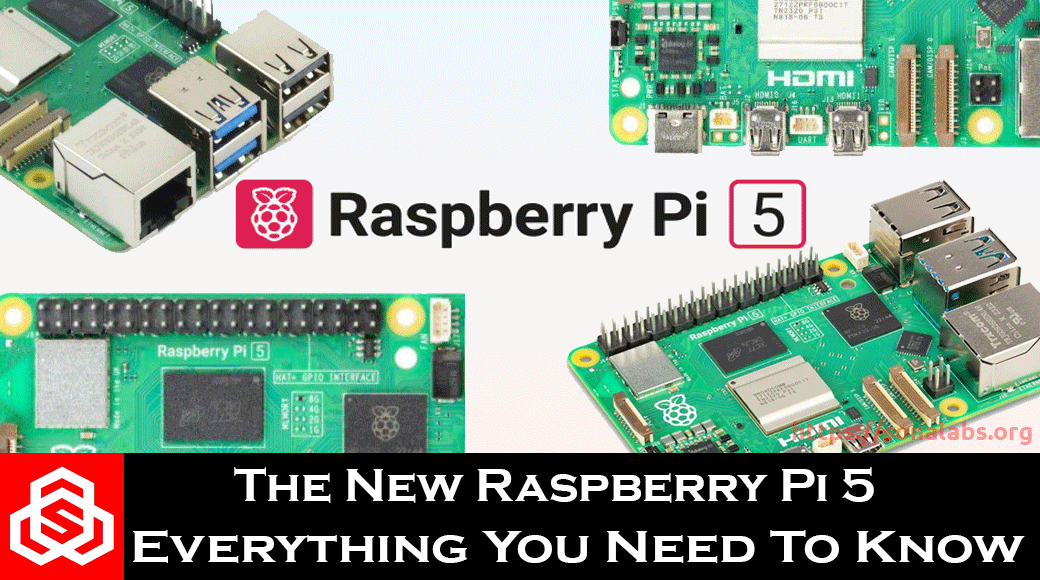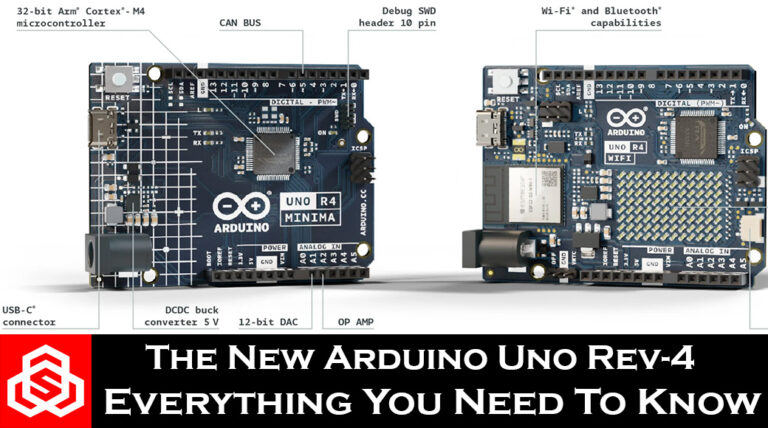The New Raspberry Pi-5 (Everything you need to know)…
Introducing the Raspberry Pi 5
On the 28th of September-2023, the Raspberry Pi Foundation announced the launch of the new Raspberry Pi 5 that will take place towards the end of October-2023. The new Raspberry Pi 5 will come in two variants (4GB & 8GB) at first going for $60 and $80 respectively (plus your local taxes) and the other variants (1GB & 2GB) are most likely to come out later towards the end of 2024.
The Raspberry Pi 5 comes jam-packed with exciting new features and almost all aspects of the Raspberry Pi board were upgraded to deliver an outstanding user performance. The Raspberry Pi 5 is 2 to 3 times faster than its predecessor (the Pi-4 Model B) and it’s the first Raspberry Pi computer to feature Silicon that was designed in-house in Cambridge, UK.
Anatomy of the Raspberry Pi-5 Board
In figure-1 below we indicate all the important parts of the Raspberry Pi 5 Board.
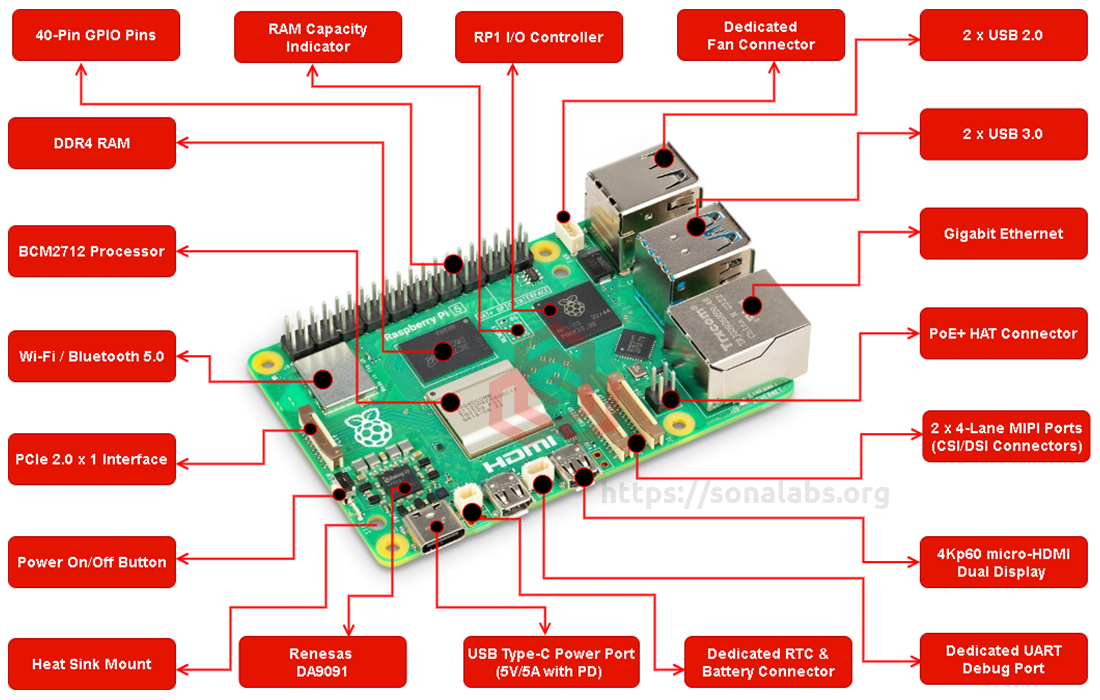
Specifications of the new Pi-5
- Broadcom BCM2712 2.4GHz quad-core 64-bit Arm Cortex-A76 CPU, with cryptography extensions, 512KB per-core L2 caches and a 2MB shared L3 cache
- VideoCore VII GPU, supporting OpenGL ES 3.1, Vulkan 1.2
- Dual 4Kp60 HDMI® display output with HDR support
- 4Kp60 HEVC decoder
- LPDDR4X-4267 SDRAM (4GB and 8GB SKUs available at launch)
- Dual-band 802.11ac Wi-Fi®
- Bluetooth 5.0 / Bluetooth Low Energy (BLE)
- microSD card slot, with support for high-speed SDR104 mode
- 2 × USB 3.0 ports, supporting simultaneous 5Gbps operation
- 2 × USB 2.0 ports
- Gigabit Ethernet, with PoE+ support (requires separate PoE+ HAT)
- 2 × 4-lane MIPI camera/display transceivers
- PCIe 2.0 x1 interface for fast peripherals (requires separate M.2 HAT or other adapter)
- 5V/5A DC power via USB-C, with Power Delivery support
- Raspberry Pi standard 40-pin header
- Real-time clock (RTC), powered from external battery
- Power button
Highlights of the Pi-5 board
Processor, RAM & GPU
The Raspberry Pi 5 board features a 2.4GHz ARM Cortex-A76 CPU and an 800MHz VideoCore VII GPU. These boost performance up to 2 to 3 times quicker than the Raspberry Pi 4 Model B.
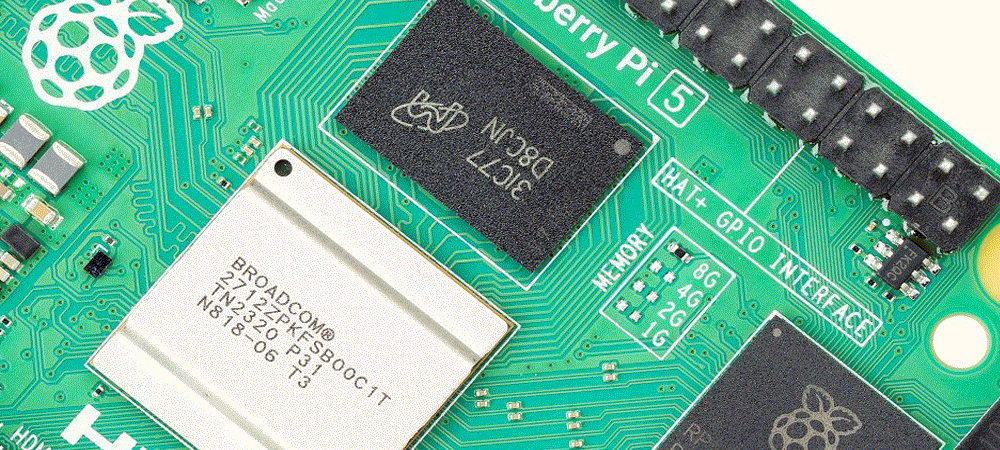
Raspberry Pi 5 may be a better option if your project demands high-speed processing capabilities, for-instance working on Artificial Intelligence (AI) projects that require high computing power or projects that require extensive graphical rendering. The Raspberry Pi 5 is designed to support 8GB, 4GB, 2GB, and 1GB variants of LPDDR4X-4267 RAM (although, only 8GB and 4GB RAM options will be available at launch). Unlike all the previous Raspberry Pi boards, the Pi-5 also features a RAM size indicator on the board, so you don’t have to wonder how much RAM your Raspberry Pi 5 has.
New Chipset Combo
Three new chips (that is; the BCM2712, the RP1 & the DA9091) were each designed specifically for the Raspberry Pi 5 board and they all come together to deliver an outstanding performance.
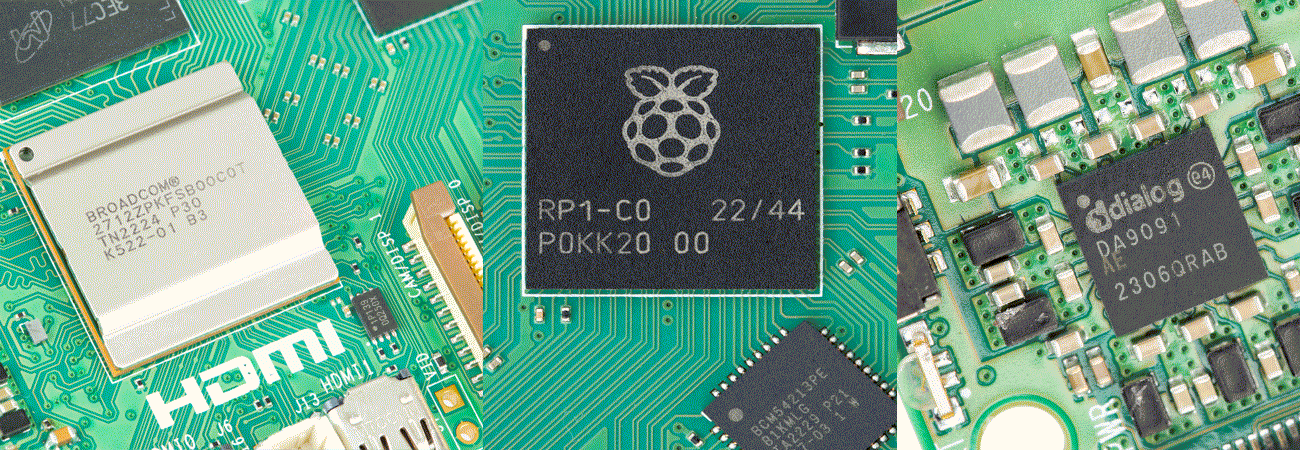
The BCM2712 is a new 16-nanometer application processor (AP) from Broadcom that is based on the 28-nanometer BCM2711 AP that powers the Raspberry Pi 4. At its heart is a 2.4GHz quad-core 64-bit Arm Cortex-A76 processor with 512KB per-core L2 caches and a 2MB shared L3 cache.
The RP1 is the Raspberry Pi 5’s input/output controller, built by the same Raspberry Pi team that delivered the RP2040 microcontroller. It has two USB 3.0 and two USB 2.0 ports, as well as a Gigabit Ethernet controller, two four-lane MIPI transceivers for camera and display, analogue video output, 3.3V general-purpose I/O (GPIO), and the usual assortment of GPIO-multiplexed low-speed interfaces (UART, SPI, I2C, I2S, and PWM). A four-lane PCI Express 2.0 interface provides a 16Gb/s link back to BCM2712.
The BCM2712 and the RP1 are supported by the chipset’s third new component, the Renesas DA9091 “Gilmour” power-management IC (PMIC). This includes eight independent switch-mode power supplies to provide the board’s various voltages, including a quad-phase core supply capable of supplying 20 amps of current to power the Cortex-A76 cores and other digital logic in the BCM2712 chip.
Power Supply
The Raspberry Pi 5 comes with a new 27W USB-C power supply unit (PSU) capable of providing (5V at 5A with PD). For projects that demand high loads of power, it is advised to use the official 27W USB-C PD PSU from Raspberry Pi.
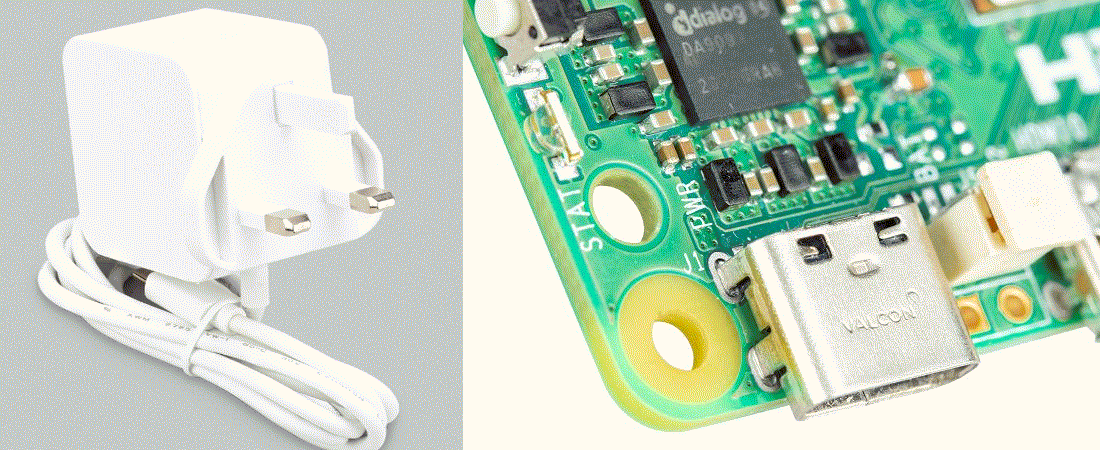
The Raspberry Pi 5 can also be be powered with the PSU of the Pi-4 Model B (5V / 3A) or the normal USB-C PSU. However, in this case, the Pi-5 will only be able to provide up to 600mA to each of the USB ports to drive low-power peripherals because it will auto-detect the PSU used as a standard and it will limit the current supply accordingly but if powered with the official Pi-5 PSU, then it will supply up to 1.6A to the USB ports.
Camera, Display & PCIe Ports
In the space that was formerly occupied by the four-pole composite video and analogue audio jack, is where you will find the two – four lane MIPI CSI & DSI connector interfaces.
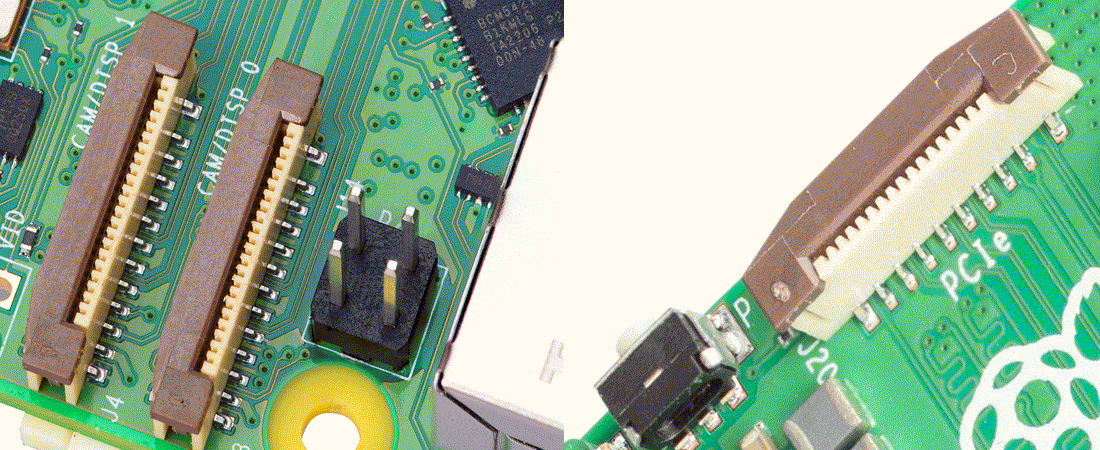
These are bi-directional (transceiver) interfaces meaning that each one can connect either to a CSI-2 camera or to a Display. Composite video on the Pi-5 is now generated by the RP1 chip, that is still available from a pair of 0.1”-spaced pads on the bottom edge of the board.
The space on the left edge of the board that was formerly occupied by the display connector now contains a smaller FPC connector which provides a single lane of PCI Express 2.0 connectivity for high-speed peripherals.
Dedicated UART, Fan & RTC/Battery port
The Raspberry Pi 5 comes with a UART communication port, a fan connector port and an RTC/Battery port which are all in-built dedicated ports. The UART port can be used for any UART communication needs and it also supports debug mode which is always enabled by default. This port is compatible with the Raspberry Pi Debug Probe.

The Raspberry Pi 5 comes with a dedicated fan connector that eases the installation of a cooling fan for good thermal management while using the Pi. This port provides power and PWM control to the cooling fan. At launch, the Pi-5 will come with two official fans or coolers that are specifically designed for this port. That is; the official Raspberry Pi 5 Case with a built-in fan and the official heatsink and Active cooler too keep the Raspberry Pi 5 cool as shown in the figure below.
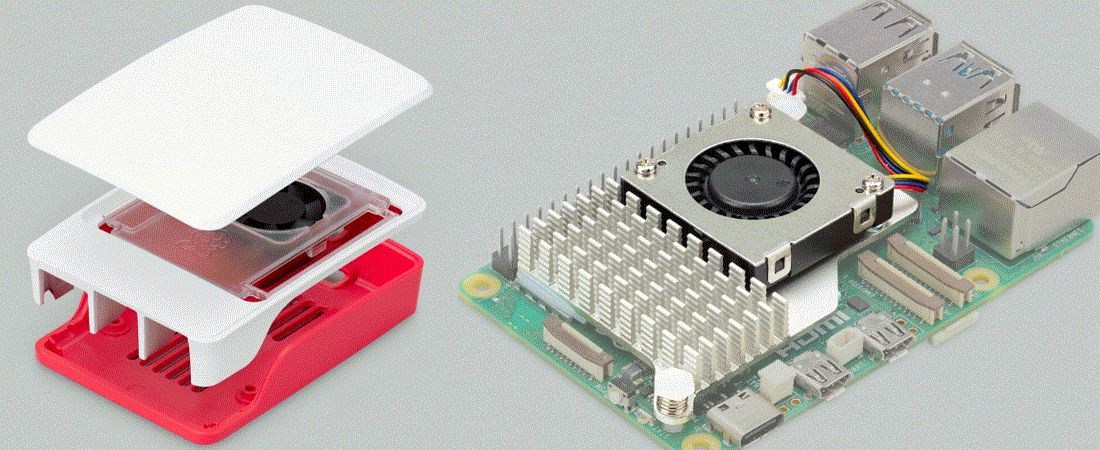
The Pi-5 also comes with a built-in Real Time Clock (RTC) that is powered by an external battery via the dedicated battery port. With the use of the external battery, the Real Time Clock keeps track of time even when the Pi 5 is turned off or in the event of loss of power. This will help keep all the time-related projects stable and reliable.
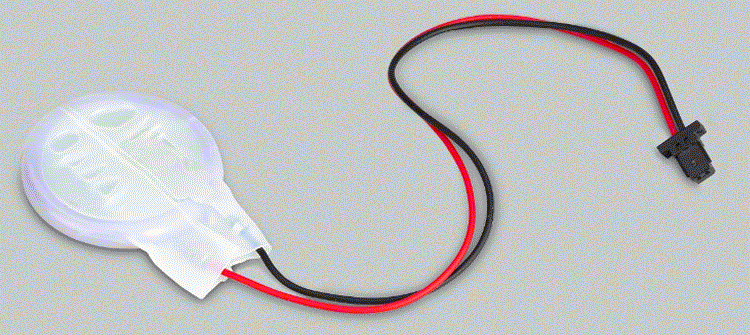
Power button & RAM indicator
For the first in the history of the Raspberry Pi, the Pi-5 is the first board to feature an on-board Power Button and a memory indicator. The power button will help you to safely turn on and off your Raspberry Pi 5 SBC with a press of a button just like you always do on your laptop.
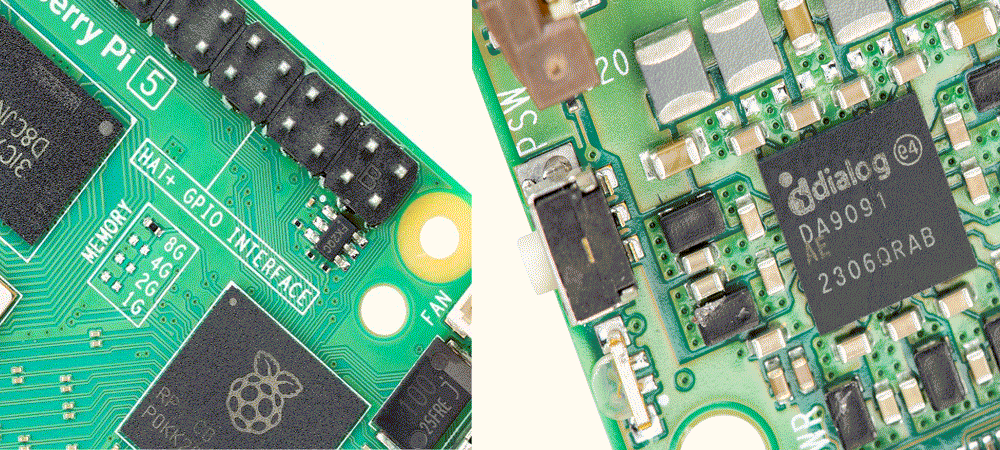
The on-board RAM indicator (model indicator) will help you to easily identify the RAM capacity of your Raspberry Pi 5.
Differences between the Pi-4B and the Pi-5
Here are the differences between the old Raspberry Pi 4 Model B and the new Raspberry Pi 5 Board.
Raspberry Pi 5 Mechanical Drawing
Below is the mechanical drawing of the Raspberry Pi 5 Board in case you would wish to design a custom casing for it.
Compliance
The adopted Trademarks Raspberry Pi and the Raspberry Pi logo are registered trademarks of the Raspberry Pi Foundation, Raspberry Pi Ltd in the United Kingdom.
The Adopted Trademarks HDMI®, HDMI High-Definition Multimedia Interface, and the HDMI Logo are trademarks or registered trademarks of HDMI Licensing Administrator, Inc. in the United States and other countries.
If you liked this blog post about the new Raspberry Pi 5 please subscribe to our YouTube Channel for more Updates, D.I.Y tutorials, and projects.
Leave a comment down below incase you have any questions about this new Raspberry Pi 5 Board.
Follow us on our different social media platforms;- LinkedIn, Facebook, Instagram, TikTok, & Pinterest.


